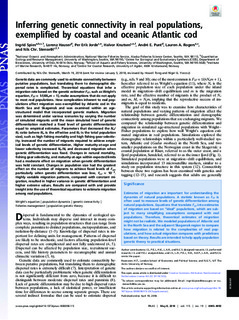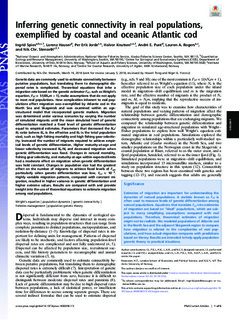| dc.description.abstract | Genetic data are commonly used to estimate connectivity between putative populations, but translating them to demographic dispersal rates is complicated. Theoretical equations that infer a migration rate based on the genetic estimator FST, such as Wright’s equation, FST ≈ 1/(4Nem + 1), make assumptions that do not apply to most real populations. How complexities inherent to real populations affect migration was exemplified by Atlantic cod in the North Sea and Skagerrak and was examined within an age-structured model that incorporated genetic markers. Migration was determined under various scenarios by varying the number of simulated migrants until the mean simulated level of genetic differentiation matched a fixed level of genetic differentiation equal to empirical estimates. Parameters that decreased the Ne/Nt ratio (where Ne is the effective and Nt is the total population size), such as high fishing mortality and high fishing gear selectivity, increased the number of migrants required to achieve empirical levels of genetic differentiation. Higher maturity-at-age and lower selectivity increased Ne/Nt and decreased migration when genetic differentiation was fixed. Changes in natural mortality, fishing gear selectivity, and maturity-at-age within expected limits had a moderate effect on migration when genetic differentiation was held constant. Changes in population size had the greatest effect on the number of migrants to achieve fixed levels of FST, particularly when genetic differentiation was low, FST ≈ 10−3. Highly variable migration patterns, compared with constant migration, resulted in higher variance in genetic differentiation and higher extreme values. Results are compared with and provide insight into the use of theoretical equations to estimate migration among real populations. | nb_NO |

